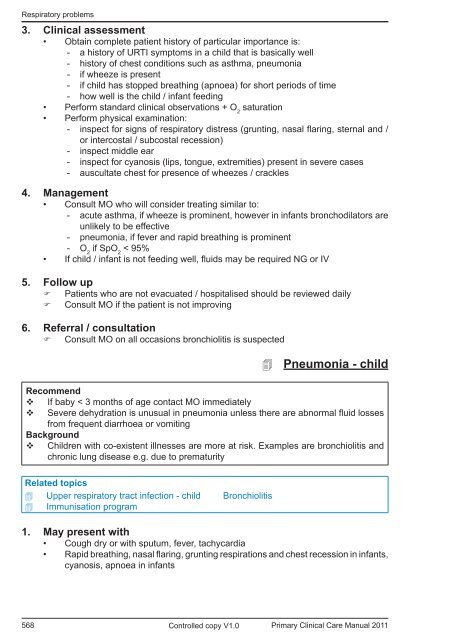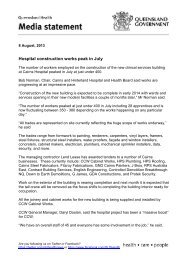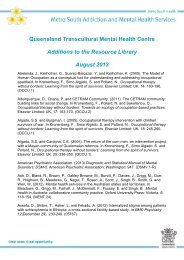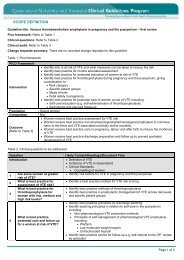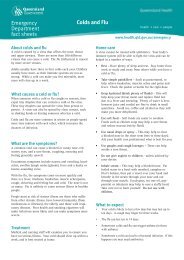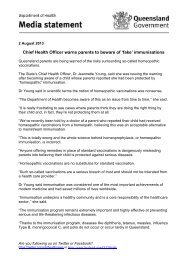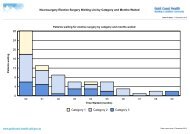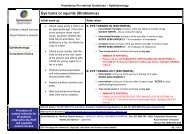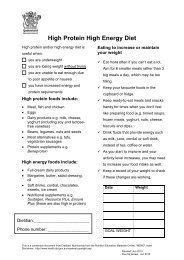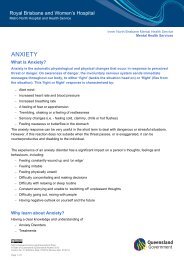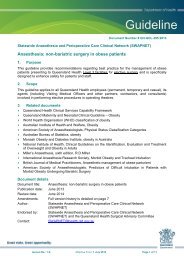Paediatrics - Queensland Health - Queensland Government
Paediatrics - Queensland Health - Queensland Government
Paediatrics - Queensland Health - Queensland Government
You also want an ePaper? Increase the reach of your titles
YUMPU automatically turns print PDFs into web optimized ePapers that Google loves.
Respiratory problems<br />
3. Clinical assessment<br />
• Obtain complete patient history of particular importance is:<br />
- - a history of URTI symptoms in a child that is basically well<br />
- - history of chest conditions such as asthma, pneumonia<br />
- - if wheeze is present<br />
- - if child has stopped breathing (apnoea) for short periods of time<br />
-- how well is the child / infant feeding<br />
•<br />
•<br />
Perform standard clinical observations + O saturation<br />
2<br />
Perform physical examination:<br />
- - inspect for signs of respiratory distress (grunting, nasal flaring, sternal and /<br />
or intercostal / subcostal recession)<br />
- - inspect middle ear<br />
- - inspect for cyanosis (lips, tongue, extremities) present in severe cases<br />
- - auscultate chest for presence of wheezes / crackles<br />
4. Management<br />
• Consult MO who will consider treating similar to:<br />
-- acute asthma, if wheeze is prominent, however in infants bronchodilators are<br />
unlikely to be effective<br />
-- pneumonia, if fever and rapid breathing is prominent<br />
-- O if SpO < 95%<br />
2 2<br />
• If child / infant is not feeding well, fluids may be required NG or IV<br />
5. Follow up<br />
Patients who are not evacuated / hospitalised should be reviewed daily<br />
Consult MO if the patient is not improving<br />
6. Referral / consultation<br />
Consult MO on all occasions bronchiolitis is suspected<br />
568<br />
Controlled copy V1.0<br />
Pneumonia - child<br />
Recommend<br />
If baby < 3 months of age contact MO immediately<br />
Severe dehydration is unusual in pneumonia unless there are abnormal fluid losses<br />
from frequent diarrhoea or vomiting<br />
Background<br />
Children with co-existent illnesses are more at risk. Examples are bronchiolitis and<br />
chronic lung disease e.g. due to prematurity<br />
Related topics<br />
Upper respiratory tract infection - child<br />
Immunisation program<br />
Bronchiolitis<br />
1. May present with<br />
• Cough dry or with sputum, fever, tachycardia<br />
• Rapid breathing, nasal flaring, grunting respirations and chest recession in infants,<br />
cyanosis, apnoea in infants<br />
Primary Clinical Care Manual 2011


